Archives
- 2025-12
- 2025-11
- 2025-10
- 2025-09
- 2025-03
- 2025-02
- 2025-01
- 2024-12
- 2024-11
- 2024-10
- 2024-09
- 2024-08
- 2024-07
- 2024-06
- 2024-05
- 2024-04
- 2024-03
- 2024-02
- 2024-01
- 2023-12
- 2023-11
- 2023-10
- 2023-09
- 2023-08
- 2023-07
- 2023-06
- 2023-05
- 2023-04
- 2023-03
- 2023-02
- 2023-01
- 2022-12
- 2022-11
- 2022-10
- 2022-09
- 2022-08
- 2022-07
- 2022-06
- 2022-05
- 2022-04
- 2022-03
- 2022-02
- 2022-01
- 2021-12
- 2021-11
- 2021-10
- 2021-09
- 2021-08
- 2021-07
- 2021-06
- 2021-05
- 2021-04
- 2021-03
- 2021-02
- 2021-01
- 2020-12
- 2020-11
- 2020-10
- 2020-09
- 2020-08
- 2020-07
- 2020-06
- 2020-05
- 2020-04
- 2020-03
- 2020-02
- 2020-01
- 2019-12
- 2019-11
- 2019-10
- 2019-09
- 2019-08
- 2019-07
- 2018-07
-
To validate the identified phosphorylation sites in
2023-09-12
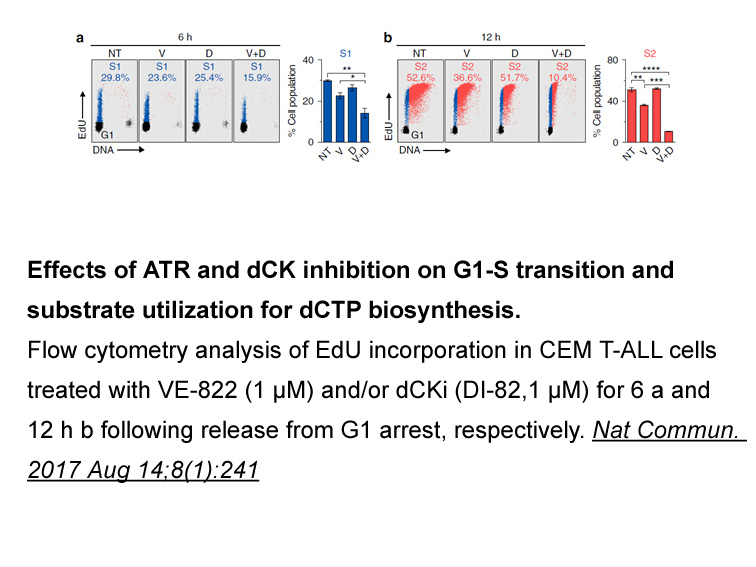
To validate the identified phosphorylation sites in the mouse heart, we analyzed HEK 293T sgk inhibitor transfected with Adrb1 based on the hypothesis that protein residues phosphorylated both in vivo and in vitro are more likely to be physiologically relevant. All of the phosphorylation sites iden
-
br Adiponectin in prostate cancer PC
2023-09-12
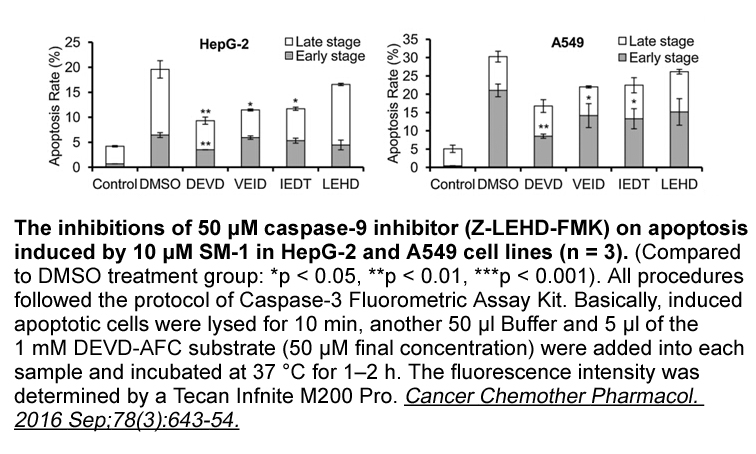
Adiponectin in prostate cancer PC was documented as the leading type of malignancy in males in the US with respect to both the estimated number of cases (22,800) and deaths (27,540) (Siegel et al., 2016). Studies have reported an association between low APN levels and the progression of PC (Micha
-
br Material and methods br Results br
2023-09-12
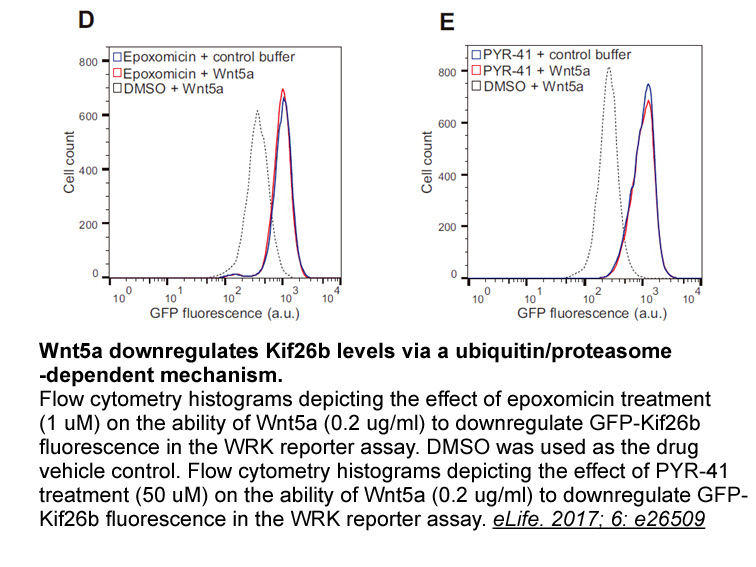
Material and methods Results Discussion To develop a novel regenerative and/or neuroprotective therapy for optic neuropathy, including glaucoma, numerous studies have tested new candidates favorable to RGC survival and axon regeneration. Among the many candidate drugs, AdoR modulators are o
-
The A b action occurs
2023-09-12

The A2b action occurs in conditions where high concentrations of adenosine is generated, so its blockage does not interfere with other physiological processes mediated by adenosine and others AR [105]. Furthermore the A3 receptor was shown to have pro-apoptotic effects on tumor lines of breast, lung
-
br Discussion Mycobacterium tuberculosis infection is a main
2023-09-12

Discussion Mycobacterium tuberculosis infection is a main threat to mankind, with one third of the world population being infected. [9] Over nine million new cases of tuberculosis and two million deaths from this disease occur yearly worldwide. [10] The rising incidence of tuberculosis over the l
-
br Conclusion In summary screening a small compound library
2023-09-12
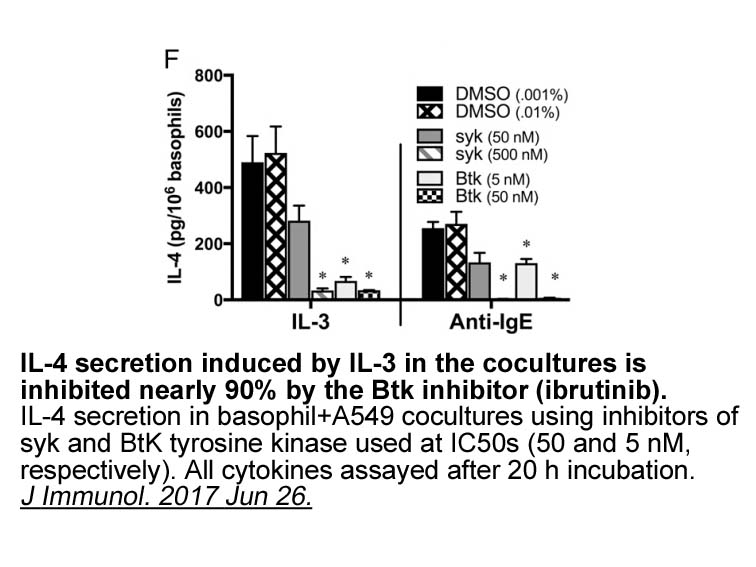
Conclusion In summary, screening a small compound library based on the 3-aminopyridin-2-one motif in a target-blind manner against a 26-kinase panel, representative of the kinome, identified hits that possess good activity and excellent ligand efficiency against MPS1, Aurora A and Aurora B. The b
-
Upregulation of ACLY is common in many cancers Kuhajda Milgr
2023-09-12

Upregulation of ACLY is common in many cancers (Kuhajda, 2000, Milgraum et al., 1997, Swinnen et al., 2004, Yahagi et al., 2005). This is in part due to the transcriptional activation by SREBP-1 resulting from the activation of the PI3K/AKT pathway in cancers (Kim et al., 2010, Nadler et al., 2001,
-
br Discussion Herein we demonstrate that mice
2023-09-12
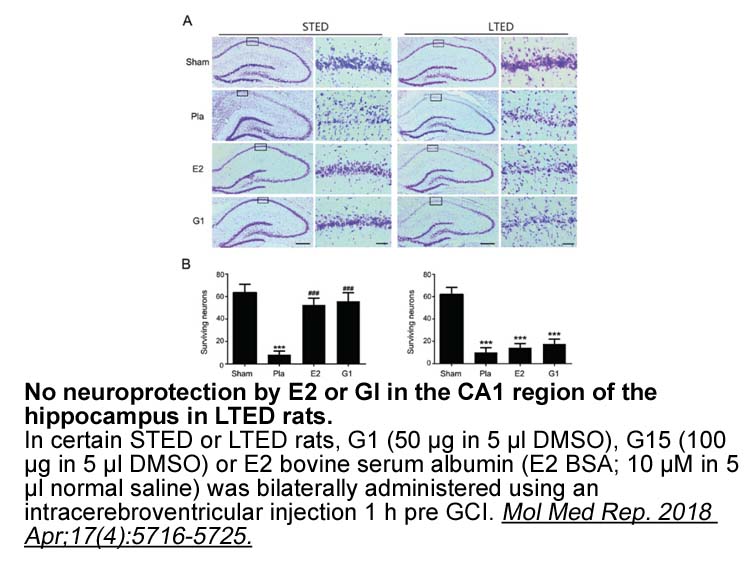
Discussion Herein, we demonstrate that mice deficient in L-12/15 LO are more sensitive to 3-NP-induced toxicity although a substantial individual variability in striatal lesion size in response to 3-NP in both genotypes was observed. This variability is not atypical; several studies demonstrate s
-
Hypoxia induced replication arrest has been demonstrated in
2023-09-12
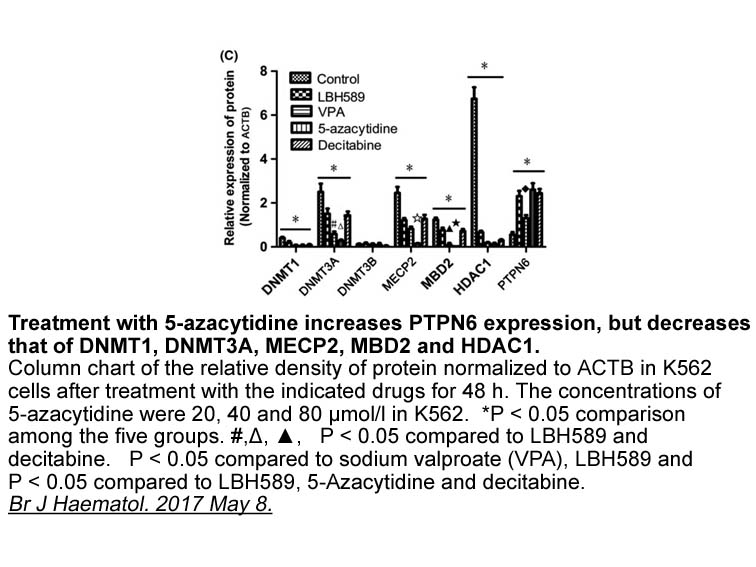
Hypoxia-induced replication arrest has been demonstrated in a variety of organisms in addition to mammals; including Zebrafish , , and (brine shrimp) which have been shown to survive for 4 years and longer in anoxic conditions . Despite this breadth of study, little is known about the mechanism of
-
BCA Protein Quantitation Kit There are however concerns of p
2023-09-12

There are however, concerns of potential side-effects that should also be taken into account. Even though some studies pointed towards a potentially greater radiosensitising effect in p53-deficient tumours, ATM inhibition radiosensitises BCA Protein Quantitation Kit in general, which raises the con
-
The approach of enzymatically converting an analyte and
2023-09-12
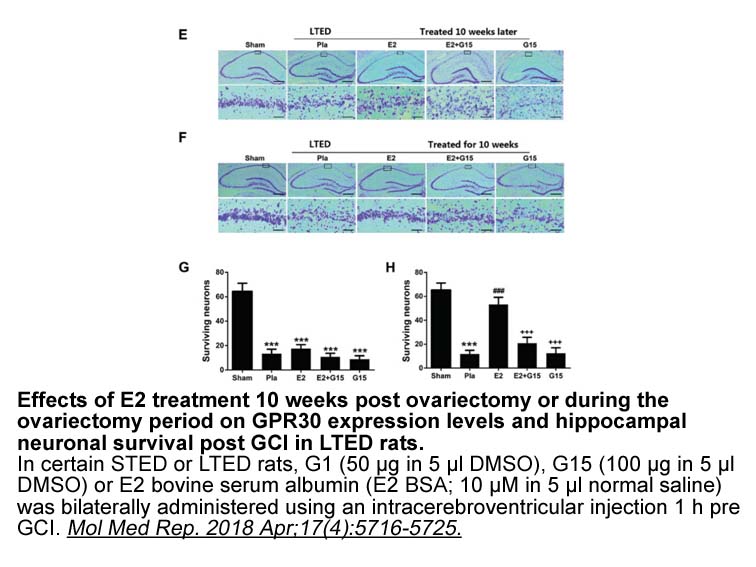
The approach of enzymatically converting an analyte and detecting it by the resulting small pH changes near the reduced graphene oxide (rGO) surface has successfully been pursued in case of urea (Piccinini et al., 2017). Furthermore, this work reported that electrostatic layer-by-layer (LbL) assembl
-
br Discussion Arginase and Arginase are homologous enzymes
2023-09-12
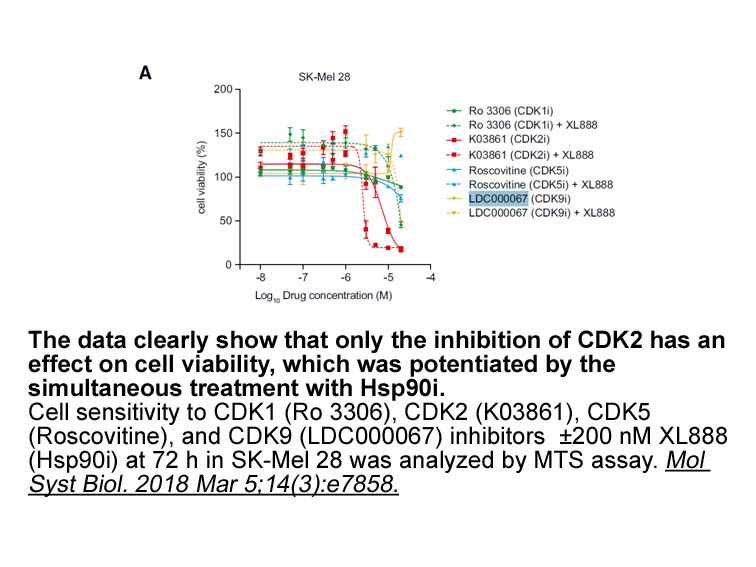
Discussion Arginase 1 and Arginase 2 are homologous enzymes that consume l-arginine to produce l-ornithine and urea [14], [15]. These enzymes compete with NO synthases for the same substrate [14], [15], [30], and therefore may reduce NO production [21], [24], [30]. The colocalization of arginases
-
Plasma apelin levels predict the major
2023-09-12
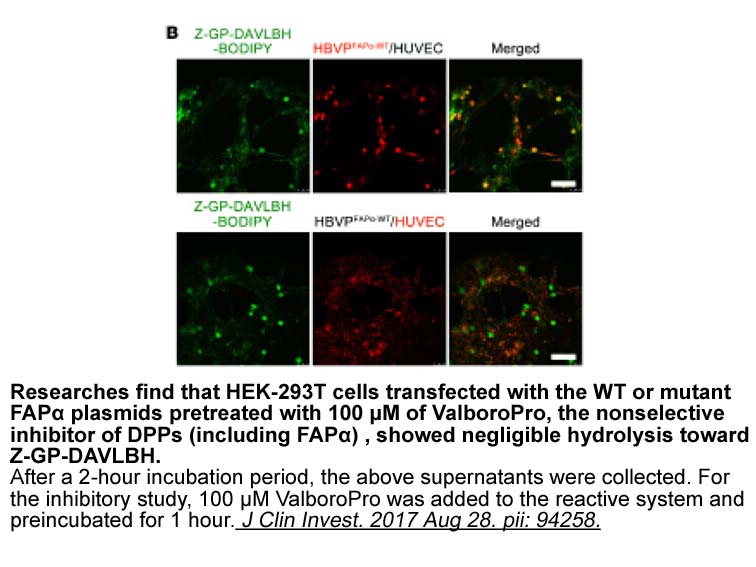
Plasma apelin levels predict the major cardiovascular event after percutaneous coronary intervention in patients with ST elevation myocardial infarction (STEMI), and adverse events are higher in patients with lower plasma apelin levels [75]. Apelin and its receptor are markedly upregulated in the he
-
br Metabolic effects of apelin in
2023-09-12
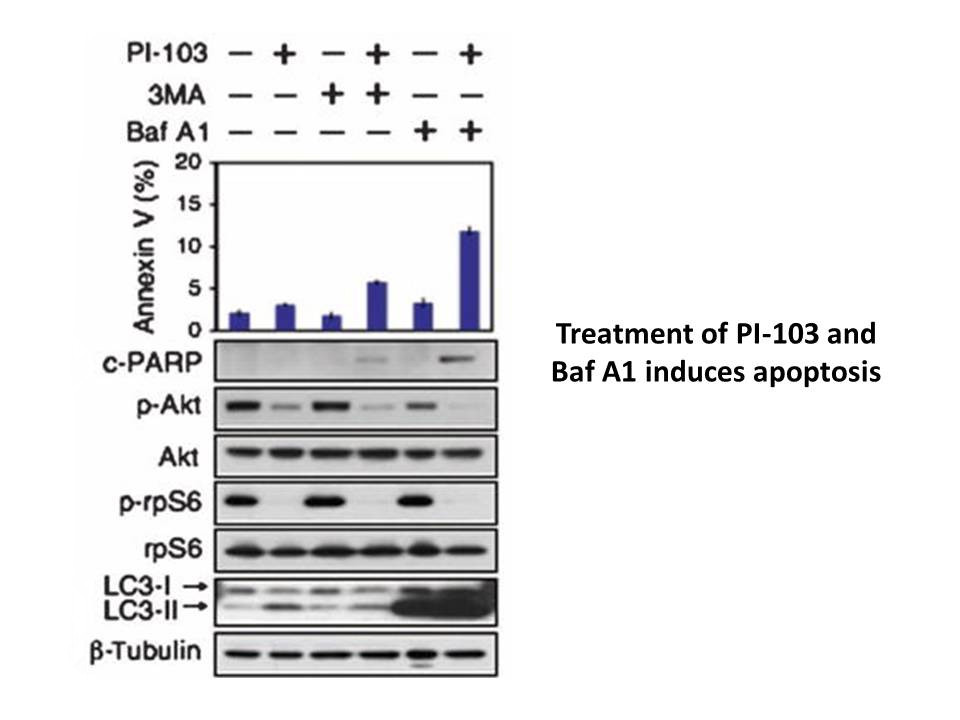
Metabolic effects of apelin in obesity and type 2 diabetes Mice fed a high fat diet (HFD) for several weeks become obese, hyperglycemic, hyperinsulinemic and insulin resistant. Acute apelin treatment by intravenous injection or by infusion during a hyperinsulinemic–euglycemic clamp in obese and i
-
F is an orotomide a novel class of
2023-09-11
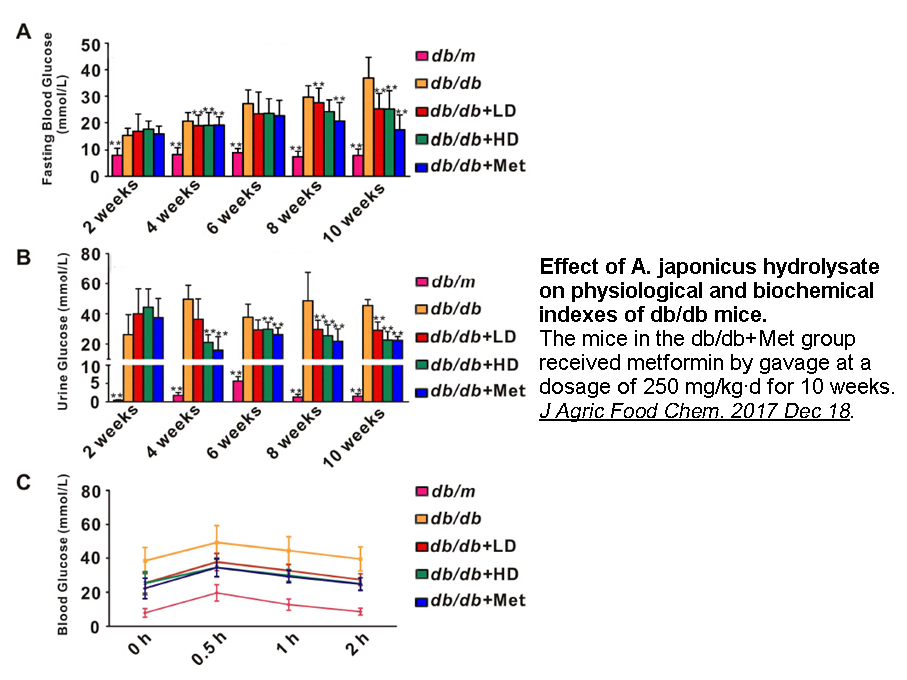
F901318 is an orotomide, a novel class of antifungals, which inhibits pyridine biosynthesis by blocking dihydroorotate dehydrogenase (URA1) activity [137]. Although this pathway is conserved in humans, human URA1 is only 20% identical to its fungal homolog and it is inhibited 2000-fold less effectiv
15360 records 287/1024 page Previous Next First page 上5页 286287288289290 下5页 Last page